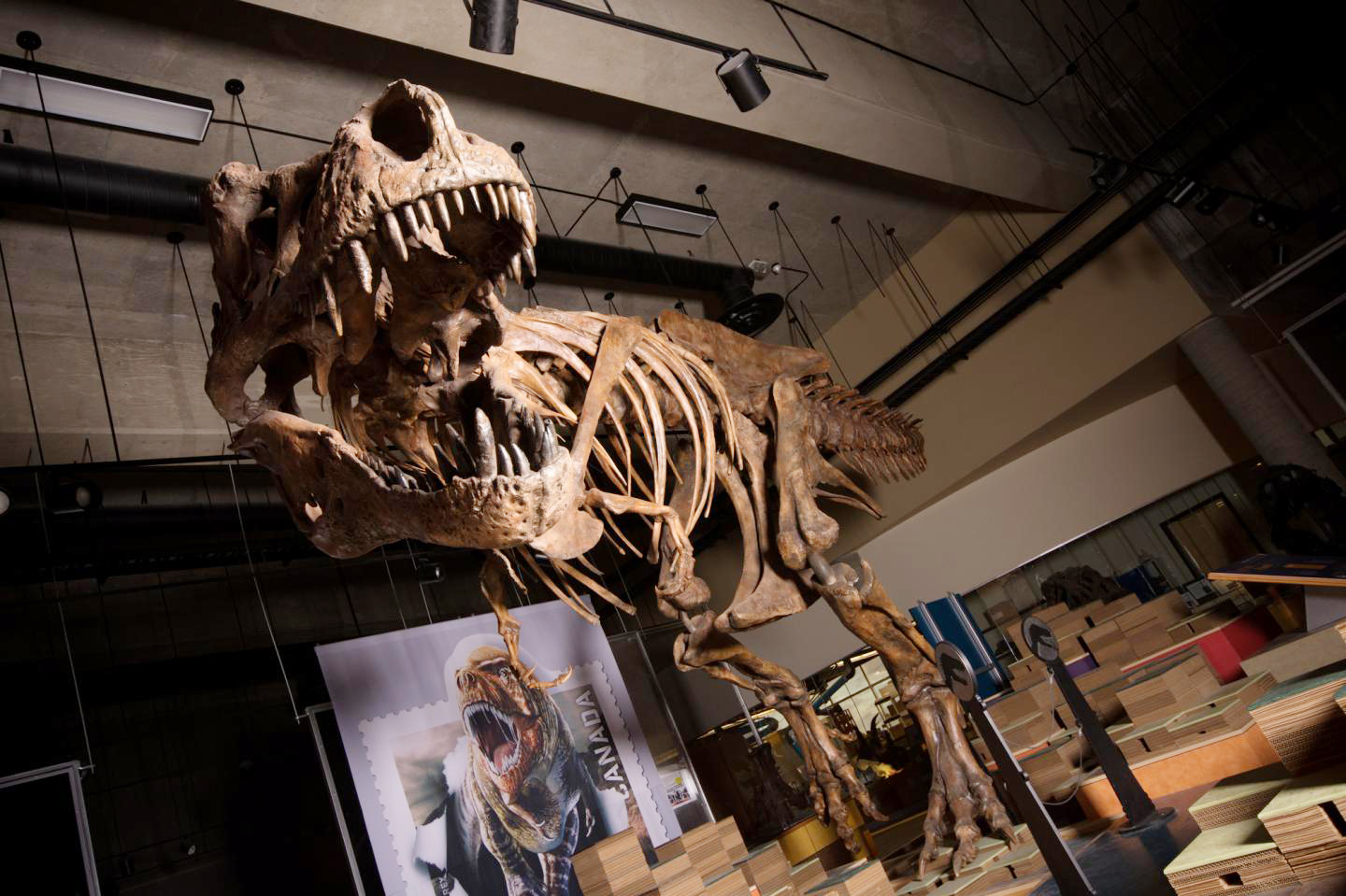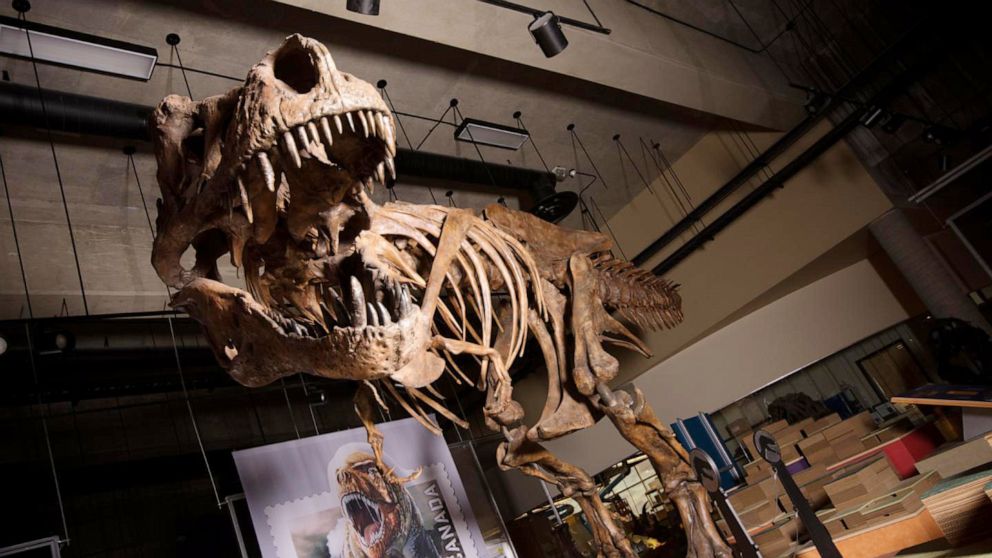Paleontologists discover world's heaviest Tyrannosaurus rex
LONDON -- Paleontologists have unearthed the remains of the largest Tyrannosaurus rex ever found, according to a new study.
The gigantic skeleton was first discovered in 1991 near the town of Eastend in Canada. But the bones were embedded in hard sandstone, and it took paleontologists more than a decade to dig them out. Only then could they fully assemble the fossil and study the specimen, which is nearly two-thirds complete.
This is the rex of rexes.
The 42-foot-long T. rex, nicknamed "Scotty" for a celebratory bottle of scotch the night it was found, roamed what is now the Canadian province of Saskatchewan some 66 million years ago. Scotty was believed to weigh more than 19,400 pounds, making it bigger than any other carnivorous dinosaur, according to the study published last week in The Anatomical Record, a peer-reviewed scientific journal.
"This is the rex of rexes," Scott Persons, the study's lead author and a postdoctoral researcher in the University of Alberta's Department of Biological Sciences, said in a statement. "There is considerable size variability among Tyrannosaurus. Some individuals were lankier than others and some were more robust. Scotty exemplifies the robust. Take careful measurements of its legs, hips, and even shoulder, and Scotty comes out a bit heftier than other T. rex specimens."

Scotty is also the longest-living known T. rex, estimated to have died in its early 30s, with the battle scars to prove it. Scotty suffered "numerous severe injuries," including broken ribs, shattered tailbones and an infected jaw, according to the study.
"By Tyrannosaurus standards, it had an unusually long life. And it was a violent one," Persons said. "Riddled across the skeleton are pathologies -- spots where scarred bone records large injuries."

The towering skeleton will be on display at a new exhibit scheduled to open in May at the Royal Saskatchewan Museum in Regina, Canada.
While Scotty is the heaviest T. rex specimin, it's not the most complete. A T. rex called "Sue," on display at the Field Museum of Natural History in Chicago, is about 90 percent complete -- and previously held Scotty's heavyweight title.
"I think there will always be bigger discoveries to be made," Persons said. "But as of right now, this particular Tyrannosaurus is the largest terrestrial predator known to science."




